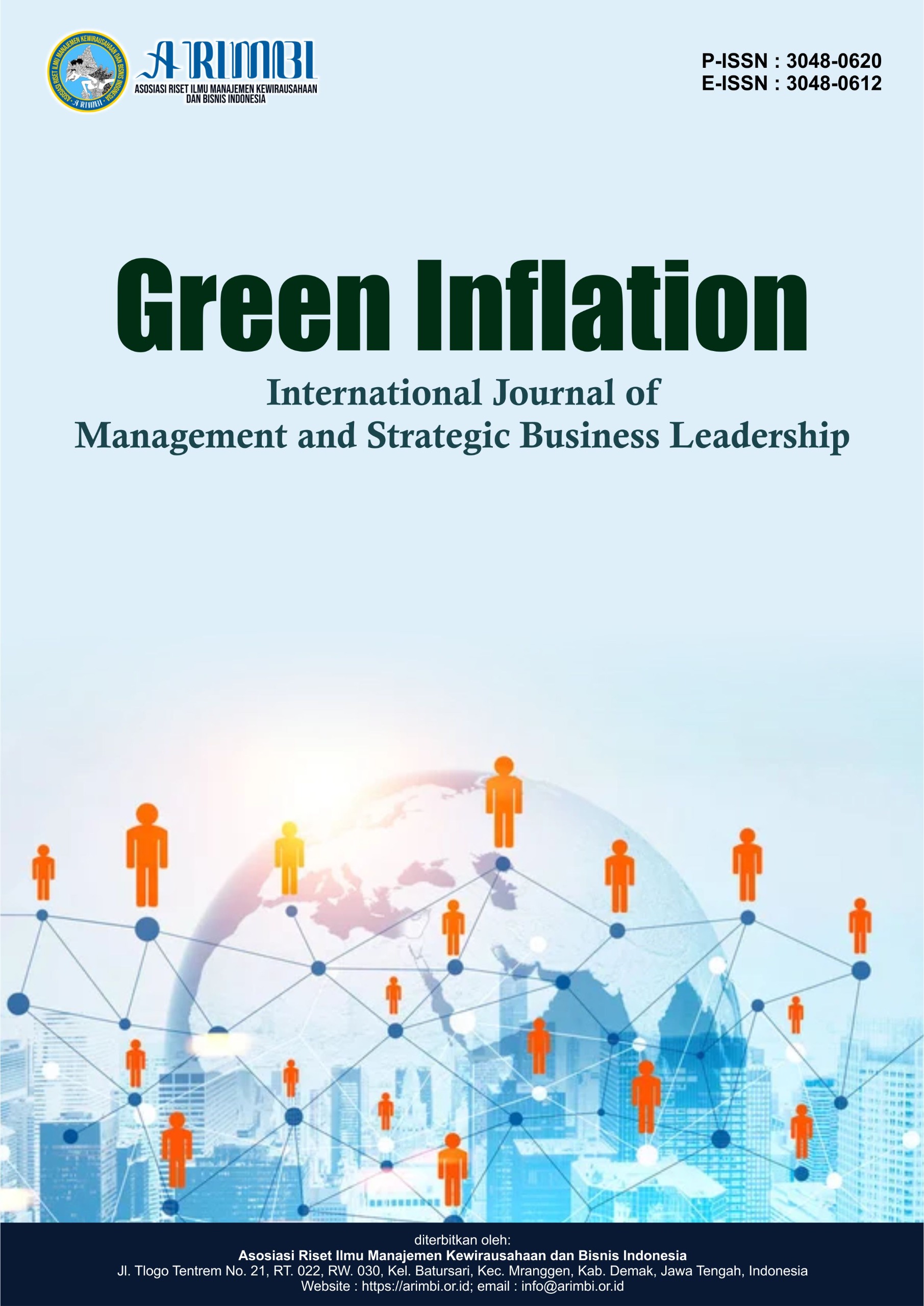Efforts to Increase Reuse Intention with the TAM Model for Multi-Service Application Users
DOI:
https://doi.org/10.61132/greeninflation.v2i2.310Keywords:
Perceived Usefulness, Perceived Ease Of Use, Perceived Risk, Reuse Intention, Technology Acceptance ModelAbstract
As time advances, humans need technology as a tool to help and facilitate all their activities in daily life, one of which is in the fields of transportation or food. In Indonesia, technological developments in the transportation sector can be seen from the rapid development of the Grab application. Through the Grab application, initially OVO was only used by the public as a payment method for Grab's transportation services. But now consumers can carry out various activities ranging from transportation to ordering food. This phenomenon illustrates how the Grab application with a payment system via OVO can be massively accepted by the Indonesian people. Acceptance of this technology can be analyzed using the Technology Acceptance Model (TAM). When using technology, people do not always receive the benefits, accept the convenience, and fully accept the risks, but often there is resistance or mistakes often occur. Therefore, this research aims to analyze the influence of the Technology Acceptance Model (TAM) with the variables perceived usefulness, perceived ease of use, and Perceived Risk in Grab application users on Reuse Intention. The population of this study were all Grab application users in Pangkalpinang City, with purposive sampling involving 112 respondents whose characteristics of application users ranged from 18-50 years and had also used the OVO feature for at least 1 year. The analytical method that will be used to analyze the data is SPSS 26.0. The results of this research explain that the variables perceived usefulness, perceived ease of use, and Perceived Risk have an influence on Reuse Intention.
Downloads
References
Agustini, K., et al. (2014). Implementation of an integrated tourism guide system mobile for performers tourism in Buleleng Regency using the TAM model. Journal of Education Technique Informatics, 03(01), April 2014.
Ashghar, S. A., & Nurlatifah, H. (2020). Analysis of the influence of perceived ease of use, perceived usefulness, and perceived risk on repurchase desire via e-trust and e-satisfaction (Case study of OVO users on transactions MSMEs). Journal Al Azhar Indonesia Series Knowledge Social, 1(1), February 2020.
Asti, W. P., Handayani, P. W., & Azzahro, F. (2021). Influence of trust, perceived value, and attitude on customers' repurchase intention for e-grocery. Journal of Food Products Marketing, 27(3), 157–171. https://doi.org/xxxx
Azmen, F. (2019). The influence of perceived usefulness, perceived ease of use, and perceived security on repurchase intention at Tokopedia.com. Advances in Economics, Business and Management Research, 64, 1–8.
Ghozali, I. (2018). Model equality structural: Concept and application with program AMOS. Semarang: Diponegoro University Press.
Heriyana, J., Ma’ruf, J. J., Honeyta, P. L., & Chan, S. (2019). The effect of perceived risk on repurchase intention of online shopping mediated by customer satisfaction in Indonesia. Social Sciences on Sustainable Development for World Challenges: The First Economics, Law, Education and Humanities International Conferences, 2019, 1–10.
Jogiyanto, H. (2012). Marketing management. Yogyakarta: BPFE Gadjah Mada University.
Kim, D. J., Ferrin, D. L., & Rao, H. R. (2018). A trust-based consumer decision-making model in electronic commerce: The role of trust, perceived risk, and their antecedents. Decision Support Systems, 106, 32–44. https://doi.org/xxxx
Masoud, E. Y. (2017). The effect of perceived risk on online shopping in Jordan. European Journal of Business and Management, 5(6), 1–12.
Mayjeksen, A., & Pibriana, D. (2020). Technology acceptance model (TAM) for analyzing user acceptance of using shopping applications online XYZ. Journal of Informatics Engineering and Information Systems, 7(3), 580–592.
Measurable AI. (2023). Share market based on sale. Retrieved from https://blog.measurable.ai/2022/09/09/2022-indonesia-ride-sharing-race-Grab-versus-grab/ (Accessed on March 1, 2022, at 09.00 WIB).
Noviarni, E. (2014). Analysis of the adoption of internet banking services by banking customers in Pekanbaru (Technology Acceptance Model). Al-Iqtishad Journal, 10(1), 1–10.
Oroh, C. R., & Rumokoy, F. S. (2015). The influence of perceived ease of use, perceived usefulness, and trust on repurchase intention of Lion Water e-ticket. Journal EMBA, 3(3), 950–958.
Priyono, A. (2017). Analysis of the influence of trust and risk in acceptance of wallet technology Go-Pay electronics. Business Strategy, 21(1), 88–106. https://journal.uii.ac.id/JSB/article/view/7338/7003
Santoso, A., & Aprianingsih, A. (2017). The influence of perceived service and e-service quality to repurchase intention: The mediating role of customer satisfaction (Case study: Go-Ride in Java). Journal of Business and Management, 6(1), 32–43.
Sarasmitha, C., & Baridwan, Z. (2014). Use of the internet as a media source literature by student program master: Approach model TAM. Journal of Business Research, 5(2), 45–56.
Yunita, N. R., et al. (2019). Influence of perception risk, trust, and security regarding online purchasing decisions at Bukalapak. Economic Journal, Management & Accountancy, 3(1), 1–15.
Downloads
Published
How to Cite
Issue
Section
License
Copyright (c) 2025 Green Inflation: International Journal of Management and Strategic Business Leadership

This work is licensed under a Creative Commons Attribution-ShareAlike 4.0 International License.




